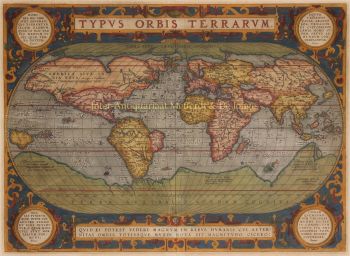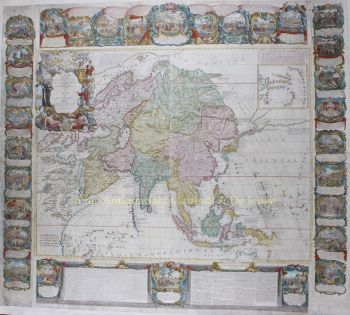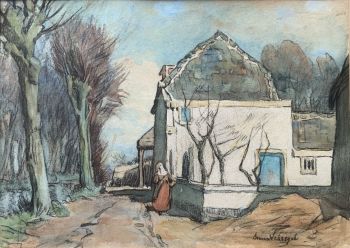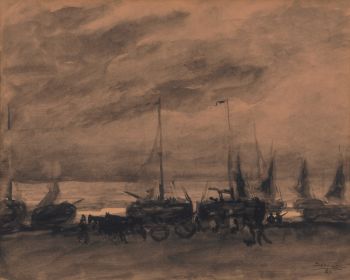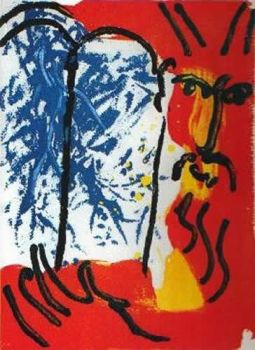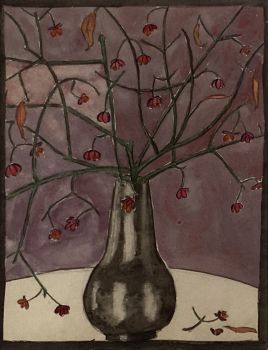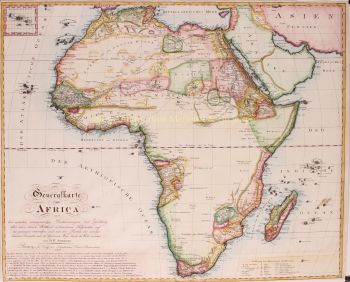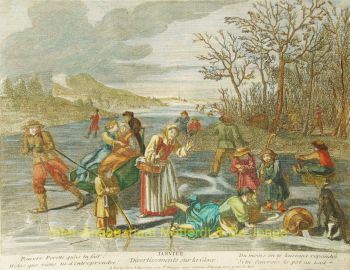Seventeen Provinces 1635
Willem Janszoon Blaeu
InchiostroCartaStampa
40 ⨯ 50 cm
€ 1.450
Inter-Antiquariaat Mefferdt & De Jonge
- A proposito di opere d'arteFAMOUS MAP OF THE SEVENTEEN PROVINCES “Novus XVII Inferioris Germaniæ Provinciarvm Typvs de integro multis in locis emendatus à Guliel. Blaeu.” Copper enrgaving made by Josua vanden Ende, here in its 3rd state published by Willem Bleau in 1635. Verso: French text. With original hand colouring. Size: 40 x 50,5 cm. The bottom right shows a cartouche with scale bar and the address of Willem Blaeu: "op 't Water in de Vergulde Zonnewyzer" [current day Damrak in Amsterdam]. On the left a cartouche a list of towns and villages per province and a legend of the symbols used. In the North Sea we see a 32-piece compass rose, a sea monster and many ships. The Fall of Antwerp in 1585 caused a de facto separation between the Northern and Southern Netherlands and the seventeen provinces split into two parts. A border arose whereby the Seventeen Provinces were split into the Republic of the Seven United Netherlands and the Southern Netherlands. Because of emigration and a change in the political situation, the economic center of The Netherlands shifted to the north. The Dutch Revolt against the Spaniards continued and meanwhile religion divided the entire continent into two parts. All of Europe was now at war, and conflicts were not resolved until the Peace of Münster in 1648. In the treaty Dutch Republic was recognized by Spain as sovereign state. At that time, the separation of the northern and southern Netherlands was a fact. Nevertheless, maps of the Seventeen Provinces regularly occur up to about 1800. This was partly beacause of the enormous costs for the fieldwork and engraving that came with the production of new maps, but was also due to the unclear borders of the area in the east and south of the Dutch Republic. Reference: H.A.M. van der Heijden “Oude kaarten der Nederlanden, 1548-1794", map 64.3 Price: Euro 1.450,-
- A proposito di opere artista
"Willem Janszoon Blaeu e suo figlio Joan incarnavano l'"età d'oro" della cartografia olandese. Lavorando durante il diciassettesimo secolo, Willem Blaeu disegnò una serie di mappe rivoluzionarie e pubblicò il primo atlante.
Nacque nel 1571 ad Amsterdam e lavorò inizialmente come impiegato nel commercio di aringhe di famiglia. Tuttavia, non era contento della sua occupazione e lasciò la casa nel 1594 per studiare matematica sotto Tycho Brahe, il famoso astronomo. Blaeu era un bravo studente che impressionò molto il suo tutor, e quando i suoi studi furono completati tornò ad Amsterdam e iniziò un'attività come cartografo. La sua attività fiorì e la sua reputazione crebbe. Fu il primo cartografo a produrre mappe a foglio singolo di molti paesi europei.
Nel 1605 realizzò una mappa murale del mondo, comprendente 20 fogli, ciascuno largo 8 piedi. Questa mappa era di gran lunga la più accurata del periodo e ha dato un contributo eccezionale alla conoscenza della geografia mondiale.
La sua mappa rimase la più accurata fino al 1648, quando suo figlio, Joan, che divenne anche un famoso cartografo, la aggiornò. Ma il suo risultato più importante fu la produzione del primo atlante nel 1630. Il nome Blaeu era in realtà un soprannome di famiglia che Willem assunse dopo che si era verificata confusione tra lui e il suo grande rivale Joannes Jansonius.
Sei interessato ad acquistare questa opera d'arte?
Artwork details
Related artworks
- 1 - 4 / 8
- 1 - 4 / 24
Jan Teunissen
Still life with apples and jug with green algae22018
Prezzo su richiestaAtelier/Galerie Jan Teunissen
Antonie Derkinderen
Memory book Exhibition of Dutch Painting1892
Prezzo su richiestaKunsthandel Pygmalion
Bernard Leemker
'Volendammer vissersboten in de haven van Hoorn´20th century
Prezzo su richiestaGalerie Gabriëls
1 - 4 / 24- 1 - 4 / 24
- 1 - 4 / 12



















